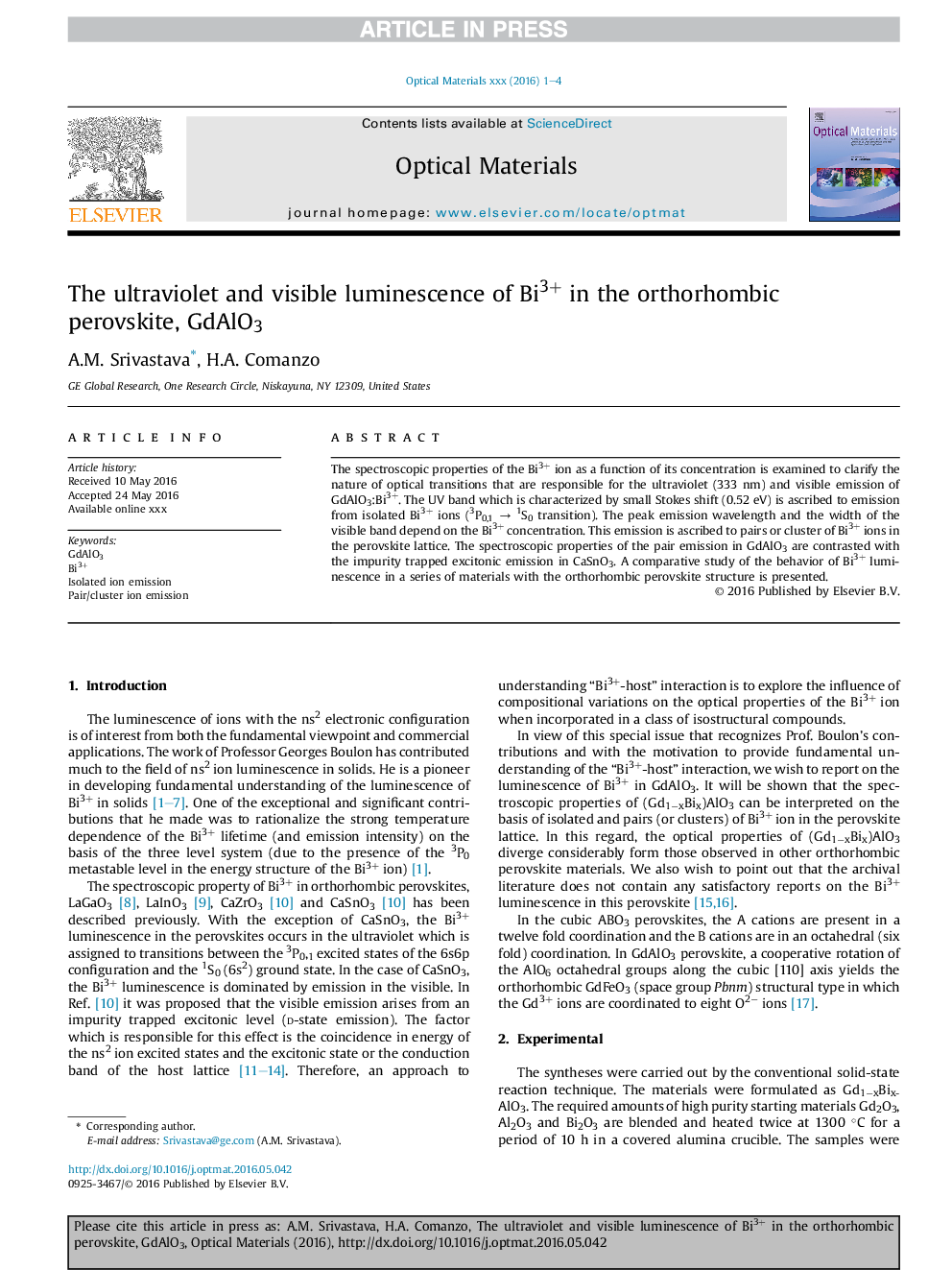| Article ID | Journal | Published Year | Pages | File Type |
|---|---|---|---|---|
| 5442923 | Optical Materials | 2017 | 4 Pages |
Abstract
The spectroscopic properties of the Bi3+ ion as a function of its concentration is examined to clarify the nature of optical transitions that are responsible for the ultraviolet (333 nm) and visible emission of GdAlO3:Bi3+. The UV band which is characterized by small Stokes shift (0.52 eV) is ascribed to emission from isolated Bi3+ ions (3P0,1 â 1S0 transition). The peak emission wavelength and the width of the visible band depend on the Bi3+ concentration. This emission is ascribed to pairs or cluster of Bi3+ ions in the perovskite lattice. The spectroscopic properties of the pair emission in GdAlO3 are contrasted with the impurity trapped excitonic emission in CaSnO3. A comparative study of the behavior of Bi3+ luminescence in a series of materials with the orthorhombic perovskite structure is presented.
Related Topics
Physical Sciences and Engineering
Materials Science
Ceramics and Composites
Authors
A.M. Srivastava, H.A. Comanzo,
